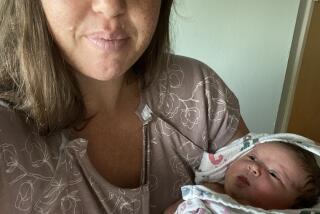Lid Kept on Key Information : Coroner’s Tip Led to Overton Inquiry
- Share via
Six months after school trustee Jan Overton died of cyanide poisoning, the Orange County coroner’s office asked homicide detectives to investigate the case, “based on some information that came to light,” a Sheriff’s Department spokesman said Friday.
Lt. Robert Rivas said he would not describe that information because detectives have not determined how the poison got into Overton’s body--although the investigation into her death more than a year ago “is one of the longest cases we’ve had.”
Friday brought more questions and few answers in the curious death of Overton, a popular trustee of the sprawling Capistrano Unified School District.
Rivas said the coroner’s office was investigating Overton’s death when “all of a sudden, some time in July, based on some information that came to light, they wanted us over here in investigation to look at it.”
Rivas said investigations into unexplained deaths brought before the Sheriff’s Department are routinely handled by homicide detectives.
“Now our people get into it . . . and they decide, well, maybe we should look at it and have toxicological tests done,” Rivas said. He said the work was sent to an out-of-state laboratory.
Investigators “didn’t get the completed toxicological studies until December” of 1988, Rivas said. He would not say if the same studies revealed that Overton had died of cyanide poisoning.
However, an amended death certificate, signed Dec. 21, 1988, by Deputy Coroner Bernie Mazuka, indicated Overton died of chemical asphyxiation due to acute cyanide intoxication. The original certificate--signed the day after Overton’s death on Jan. 24, 1988--attributed her sudden death to “natural causes . . . pending investigation.” The death certificate states that Overton was cremated 5 days after her death.
As she and her family prepared to leave for a Sunday morning outing, Overton, 46, collapsed at her Dana Point home. Paramedics revived her, but she was dead upon arrival at San Clemente General Hospital.
Although Overton had suffered from some sort of painful skin condition, it was not considered life-threatening. And an autopsy conducted shortly after Overton’s death by the coroner’s office was inconclusive, deputy coroner William King said then.
Richard Overton said Thursday that his wife was taking 13 medications at the time of her sudden death, although he declined to disclose her ailment.
On Friday, however, Overton’s San Juan Capistrano physician said he had removed her from all medication before she died.
Asked if he believed that Overton was taking cyanide in any of her medication, Dr. Bernard Huss said, “Nobody gave her cyanide for anything.”
After reading Richard Overton’s remark about the 13 medications, Huss said, “I reviewed her chart and found I’d actually discontinued her medication.”
Huss said he did not want to discuss Overton’s health or death further because “I’ve been asked by the Sheriff’s Department to keep my mouth shut.”
Jacqueline Cerra, a spokeswoman for the Capistrano Unified School District said Friday that Overton had been under a doctor’s care and “had received medical tests to see what was causing the skin irritation.”
Bob Cravey, the county’s chief forensic toxicologist, said he does not believe cyanide is used in any form of medication. But it is not uncommon to find low levels of the poison in the average person’s cells.
Cyanide, he said, is probably not found on just any home improvement store shelf, although it is sold by chemical companies for industrial use. Cravey said cyanide is used by insect exterminators for fumigation, jewelers for electroplating, and it can be found in apricot and peach pits, which have been used as a holistic--and controversial--cancer treatment.
“Anytime there is combustion--fires burning--there is cyanide produced. You will find a build-up of cyanide in cigarette smokers, even people around smokers,” Cravey said.
More to Read
Sign up for Essential California
The most important California stories and recommendations in your inbox every morning.
You may occasionally receive promotional content from the Los Angeles Times.













